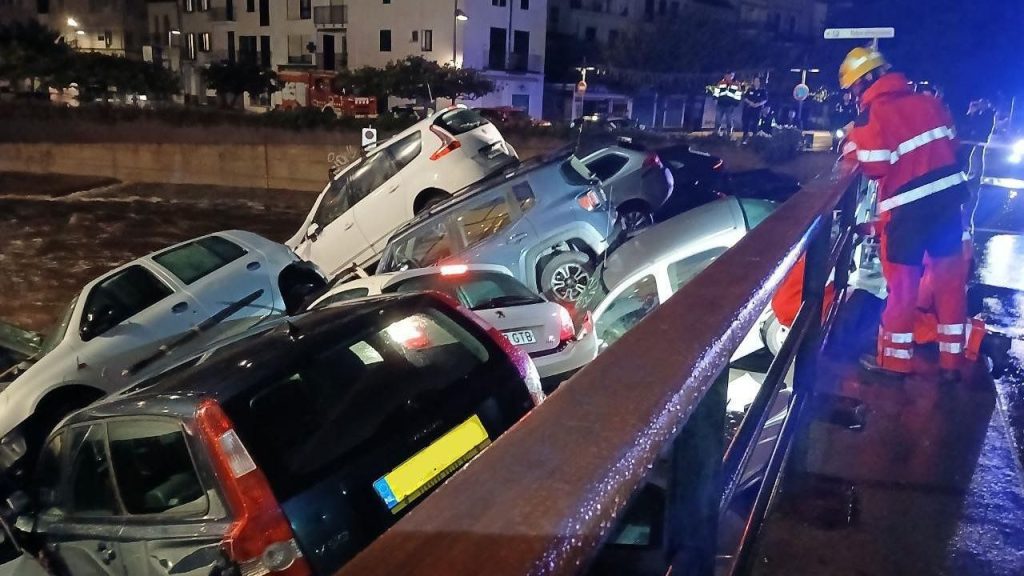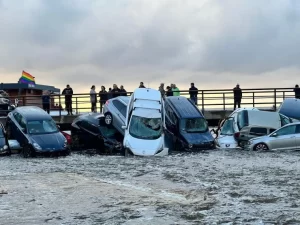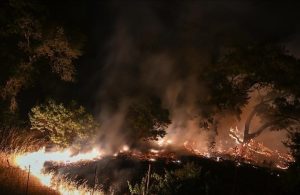
Floodwaters have once again ravaged the region of Girona in northeastern Spain, with heavy rains causing significant damage in the town of Cadaqués. Local media reports indicate that around 30 cars were swept away as torrential rain hit the area in the early hours of Friday. A dramatic video shared by a local journalist captured the terrifying scene of fast-moving floodwaters surging through the streets, with vehicles piled up under a bridge.
Fortunately, no fatalities or injuries were reported as a result of the flooding, though the images painted a grim picture of the destruction. Emergency responders confirmed that despite the chaos, no one was trapped or hurt in the town, thanks to prompt efforts by local authorities and fire services.
This latest wave of flooding comes just days after a catastrophic weather event that claimed over 200 lives across Spain, particularly in the Valencia region. The tragedy, one of the deadliest floods to hit Europe in the 21st century, has led to public outrage over the delayed response by authorities, who have been criticized for failing to issue timely flood alerts. In response to the recent devastation in Girona, Catalonia’s meteorological service issued fresh warnings of more severe weather in the region.
The rainstorm that hit Cadaqués early Friday morning triggered flash floods that caused extensive damage, including the large-scale displacement of vehicles. The floodwaters were so strong that several cars were carried away and became entangled beneath a bridge. The fire service, which responded to the emergency, confirmed via social media that there were no injuries or people trapped in the aftermath.
As of now, more dangerous weather is expected in the coming hours. Authorities have issued a rain warning for the region of Alt Empordà, where Cadaqués is located, advising residents and travelers to stay vigilant. The warning, effective from Friday evening through Saturday afternoon, indicates that rain intensity could exceed 20 mm (0.7 inches) per 30 minutes. Such intense downpours are typical of the flash floods that have recently plagued Spain.

Weather data from the Catalan meteorological service revealed that Cadaqués received 76.8 mm (3 inches) of rainfall on November 7 and 8, with neighboring towns recording even higher totals. In some areas, rainfall exceeded 100 mm (4 inches), creating conditions ripe for flash flooding. According to Aemet, Spain’s national weather agency, rainfall across the country between October 1 and November 5 was 72% higher than the typical amount for that time of year. Experts attribute these increasingly extreme weather events to the effects of climate change, which has been linked to more intense and frequent storms.
In the wake of the devastating floods last week, experts and citizens alike have pointed to a lack of preparedness by the authorities. Many survivors of the Valencia floods criticized the government for failing to issue timely emergency warnings, leaving many residents unprepared for the disaster that unfolded. The situation has sparked debates about the need for better early warning systems, as well as the growing challenges posed by climate change in southern Europe.
For now, the region remains on high alert, with authorities urging caution as more heavy rain is expected. Emergency responders have been working tirelessly to manage the aftermath of the flooding in Cadaqués, and communities across Catalonia are bracing for further weather disruptions in the coming days. The impact of these floods serves as a stark reminder of the increasing vulnerability of many regions in Spain to severe weather events, with experts warning that such extreme conditions will only become more common in the years ahead.
As the country struggles to recover from the damage caused by these catastrophic floods, the ongoing weather challenges underscore the urgency of addressing climate change and improving disaster preparedness across Europe. While emergency services continue to monitor the situation in Girona and other affected areas, the long-term solutions to these challenges remain in the hands of policymakers and climate experts, who must work to build more resilient communities in the face of a rapidly changing climate.





